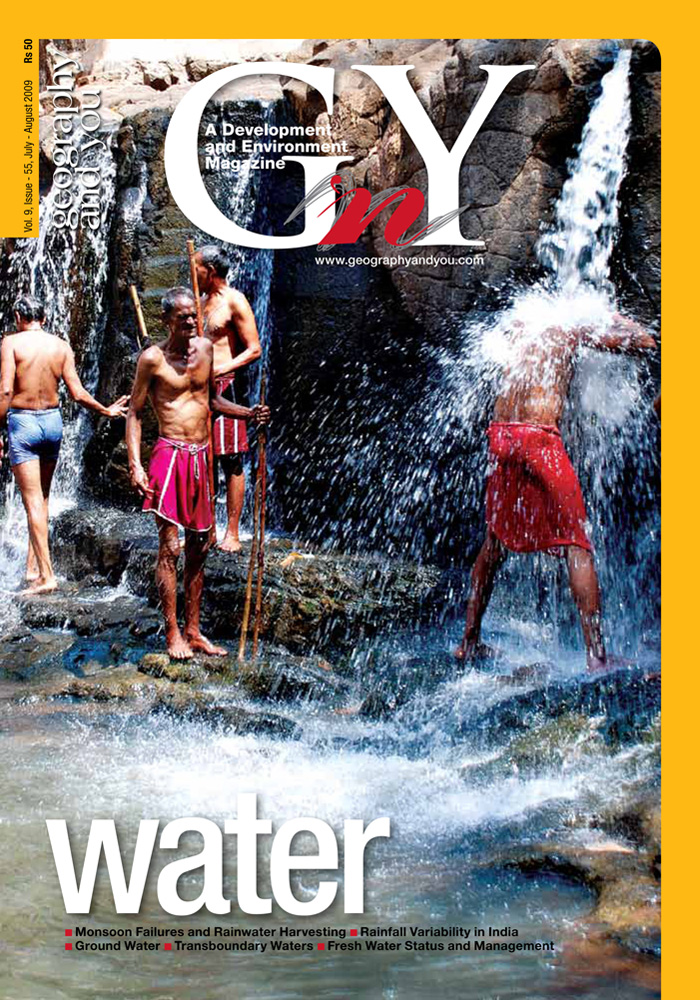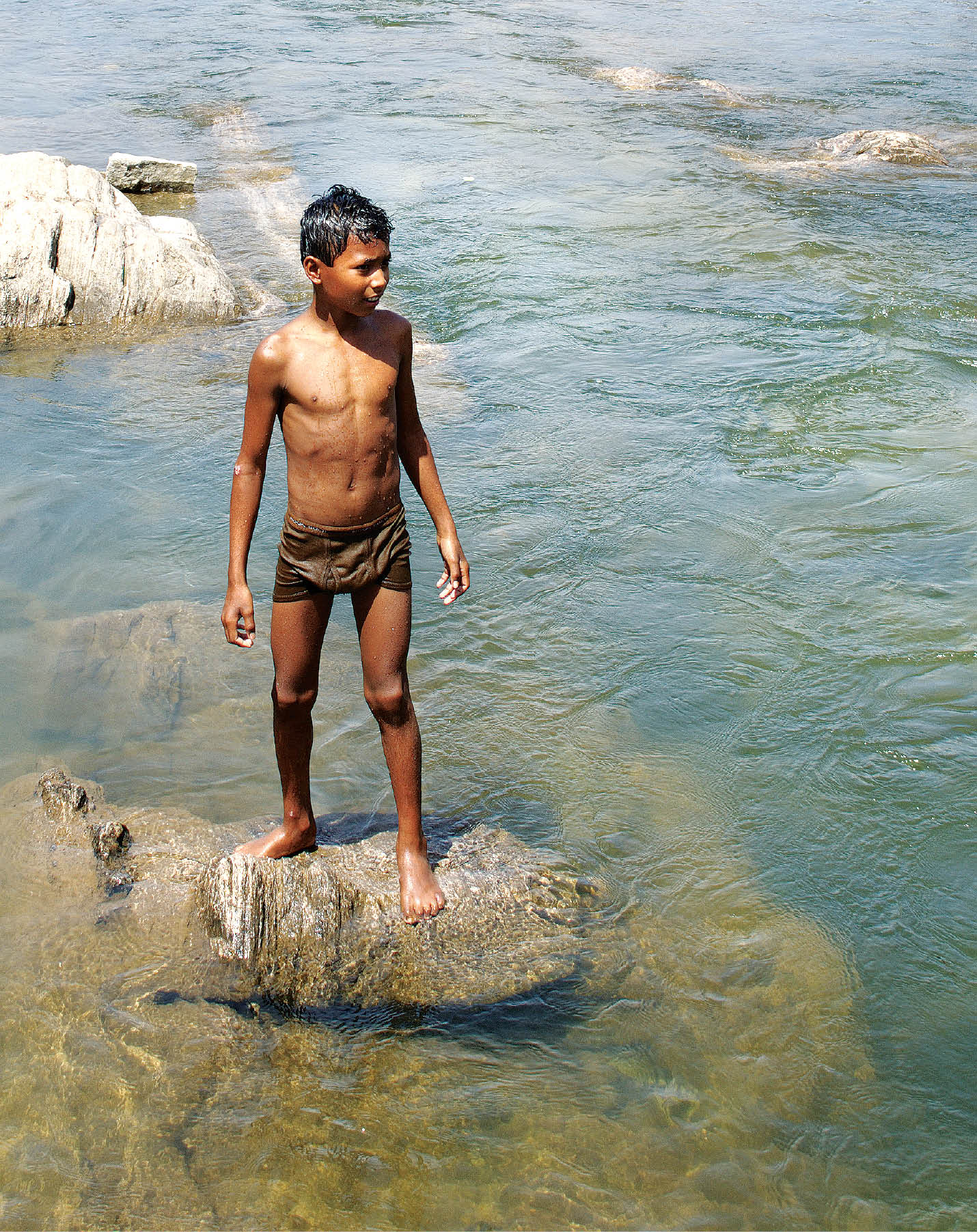
Inside this issue
Water
97 per cent of the total water on earth is saline with only 3 per cent available as fresh water. About 77 per cent of this fresh water is locked up in glaciers and permanent snow and 11 per cent is considered to occur at depths exceeding 800 meters below the ground, which cannot be extracted economically with the available technology. About 11 per cent of the resources are extractable ground water within 800 meter depth and about 1 per cent is available as surface water in lakes and rivers. Out of the 113,000 bcm of rain and snow received on the earth, evaporation losses account for about 72,000 bcm, leaving a balance of about 41,000 bcm, out of which about 9000-14000 bcm is considered utilisable.
India has so far documented over 91,200 species of animals and 45,500 species of plants in its 10 biogeographic regions. The varied edaphic, climatic and topographic conditions and years of geological stability have resulted in a wide range of ecosystems and habitats such as forests, grasslands, wetlands, deserts, and coastal and marine ecosystem.
Global warming, progressive gradual rise of the earth’s surface temperature, is at present being held responsible for changes in global climate patterns. Increase in atmospheric temperature affects various aspects of global hydrological cycle. As a result, we can expect changes in rainfall, evaporation and runoff which are projected to cause significant impacts on crops, livestock, fisheries, insects, microbes and more.
Historical societal adaptations to climate fluctuations may provide insights into potential responses of modern societies to future climate change that has a bearing on water resources, food production and management of natural systems.
The analysis of changes in the moisture regions over the past hundred years indicate a net effect of drier all India moisture conditions in the recent decades.
Nearly 85 per cent of India’s population is dependent on ground water for their domestic needs, particularly as a source of drinking water in rural areas. Yet sustainable use of ground water with formulation of appropriate legislation, strong implementation, and artificial recharge wherever practicable is still a distant dream.
Water defies political boundaries and thus cannot be dealt with in isolation. Sustainable water resources management are major challenges of the future. An increasing number of countries are experiencing permanent water stress, yet in most cases, agreements, mechanisms and institutions to manage disputes over water resources are either absent or inadequate.
The water situation in India needs serious reckoning. Per capita availability of utilisable water was 3450 cubic meters in 1951 which fell to 1250 in 1999. And according to the Ministry of Water Resources, it is expected to further decrease to 662 cubic meters per person in 2050.
The implementation of reduced emissions from deforestation and degradation (REDD) in developing countries, as a part of CO2 mitigation measures needs to be examined. For India specific situation, this scheme must have the ability to guarantee effective maintenance of forest cover over significant time periods as well as prevent an impact on society and environment. There is a need to ensure a sustainable flow of financial benefit to the indigenous or tribal communities and participation as well as capacity building of vulnerable stakeholders should be facilitated with recognition of their forests rights.
Traveller's Diary
Chennai has been a frequent haunt ever since priya, our daughter, chose to study bharatanatyam at kalakshetra. But we did not expect such surprises this time round.
IN CONVERSATION WITH
Dr Ajit Tyagi, Director General, Indian Meteorological Department (IMD) in his interaction with the Editor, spoke of unfavourable energetics fuelled by the Aila in eastern India coupled with the blocking high of Central Asia that have led to two week delay in restoration of the monsoonal circulation and consequently a shortfall of rainfall in many parts of the country.
In brief
Dear readers, We get what we deserve–and the water crisis that stares us in the face today is our creation. India’s climate is not dry, nor do we lack rivers and groundwater. But what we do lack is management. With unclear laws, government corruption, and industrial and human waste rendering o

